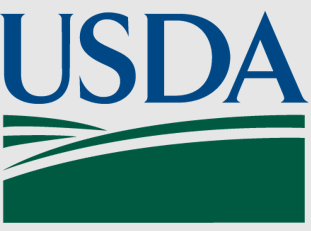Award Calculations
The Inflation Reduction Act instructed USDA to make awards “determined to be appropriate based on any consequences experienced from the discrimination,” capped at $500,000. The statute provided $2.2 billion for the program, and directed USDA to administer the program through non-governmental entities.
Across the recipient pool, the estimated losses (under program standards) totaled about $3 billion. Awards were adjusted to remain within limits of the appropriation. Because this is a one-time program, all the money available has been assigned to approved applications.
To meet the requirement that the program be carried out by nongovernmental entities, USDA contracted with a National Administrator, which established two separate and independent teams to review each application in accordance with a documented “Validation Guide” (available on USDA’s website here.) The teams consulted with USDA-identified and other agricultural experts where needed in the drafting and implementation of the guide, and USDA conducted oversight to enforce the standards and ensure appropriate program administration.
To be validated as eligible in this program, applicants had to demonstrate, in a way that reviewers could reasonably believe, that they were or planned to operate a farming or ranching; that they participated or tried to participate in USDA farm lending; and that they experienced discrimination by USDA in USDA farm lending. In this program, discrimination means treating some people differently from others, for illegitimate reasons. A claim of discrimination could be based on different treatment applicants experienced because of:
- race, color, national origin or ethnicity
- sex, sexual orientation, gender identity
- religion
- age
- marital status
- disability
- reprisal/retaliation for prior civil rights activity
The program covered all aspects of USDA’s farm lending activities. Covered discrimination could include, for example:
- failure to provide appropriate assistance
- delay in processing a loan or loan servicing application
- denial of a loan or loan servicing
- prevention from applying for a loan or loan servicing
- adverse loan terms
- unduly onerous supervision of loan requirements
To determine award amounts, program administrators estimated consequences separately for applicants who had or have farming or ranching operations and those who intended to have farming or ranching operations but were unable to establish them as a result of discrimination.
Recipients Who Had Farming or Ranching Operations (“Producers”)
For recipients who have or had farming or ranching operations, USDA established a floor of $10,000 as the minimum award, and added to that floor depending on how many separate incidents were reported and on estimates of economic losses. Loss estimates were based on evidence provided by applicants and on USDA statistical data. Losses were estimated for types of harm reported by applicants, including:
- Home foreclosure
- Lost farmland and equipment
- Lost farmland appreciation
- Lost farming profits
- Garnishments, tax liens, and other judgments
- Reduced farm productivity
- Excess interest costs (when applicants borrowed using commercial credit, because a USDA loan was denied)
Assistance directed at individuals who participated in USDA farm lending as part of a multi-person entity or as co-borrowers was split among participating co-borrowers/entity members who filed DFAP applications.
Some recipients had previously received money—most often $50,000—in a prior anti-discrimination lawsuit, settlement, or administrative action. Their DFAP awards were reduced by $2,000, plus 20% of the amount by which their prior anti-discrimination award exceeded $50,000 (but not below the floor of $10,000).
Recipients Who Planned to Operate a Farm or Ranch But Couldn’t Get a Loan (“Planned Producers”)
For recipients who planned to operate a farm or ranch but never got a loan due to USDA’s actions, the amount of financial assistance provided was set at a floor of $3,500 each. Recipients received an additional increment of up to $2,500 based on the number of years passed since the reported incident(s). As with the producers, some planned producer recipients had previously received money—nearly always $50,000—in a prior anti-discrimination lawsuit, settlement, or administrative action. Their DFAP award was reduced by $2,000, but not below the $3,500 floor.
Entities and Co-Borrowers
For those DFAP recipients whose participation in USDA farm lending was as a co-borrower or a member of a business entity, awards were shared among the co-borrowers or members of the entity who applied to DFAP; the statutory $500,000 cap operated at an individual rather than group level.
Denials
The applications that were denied were ineligible for financial assistance for one or more reasons:
- The application did not demonstrate that the applicant had or intended to have a farming or ranching operation.
- The application did not demonstrate that the applicant participated in or attempted to participate in a USDA farm lending program.
- The application did not demonstrate that the applicant experienced covered discrimination by USDA, in a farm lending program, prior to January 2021.
- The application did not demonstrate that the applicant currently has assumed or assigned debt whose original debtor experienced covered discrimination by USDA in USDA farm lending.
- The application was submitted after the deadline.
- The application related to a farm loan program for which the applicant was ineligible due to age during the timeframe provided in the application. (For example, the application described efforts to obtain a non-youth loan when the applicant was under 18.)
- The application did not provide sufficient identity-, address-, or certification-related information.
- The applicant predeceased the application signature.



